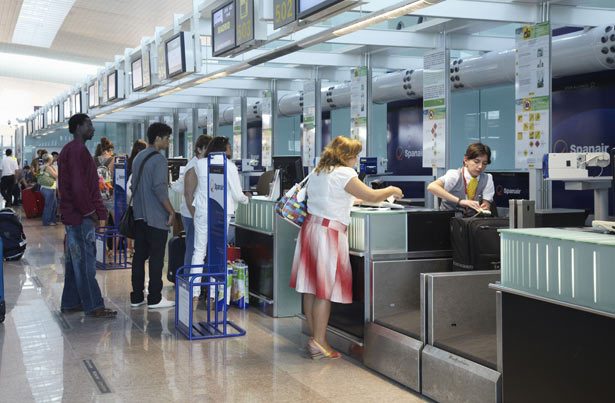Aviation
UK Airports Struggle to Implement Liquid Limit Changes

As summer approaches, travelers passing through major UK airports will continue to encounter restrictions on carrying liquids in their hand luggage, as the deadline for implementing new scanners has been extended.
Despite efforts to upgrade security technology, London Gatwick, Heathrow, and Manchester airports are unlikely to have the necessary equipment in place by the previously set date of June 1st. This delay could persist for up to a year, potentially stretching until June 2025, as airports grapple with the installation process.
The government has granted airports individual extensions, acknowledging the challenges they face in transitioning to the new scanning technology. Consequently, passengers may still be required to remove liquids and laptops from their bags during security checks. Failure to meet deadlines will result in financial penalties imposed by the Civil Aviation Authority, as announced by the UK Department of Transport.
Chris Woodroofe, managing director at Manchester Airport said to BBC, emphasized the ongoing transition, urging passengers to adhere to the existing liquid restrictions and prepare for the possibility of continued inconvenience. While some terminals may feature the new scanning lanes, the majority are still in the process of implementation.
In addition to advising travelers to comply with current regulations, passengers are urged to familiarize themselves with the rules at their destination or transfer airports, as the outdated restrictions may still apply elsewhere.
Phil Forster, managing director of Teesside Airport, expressed understanding for the challenges faced by larger airports in adapting to the new technology. The next-generation scanners, equipped with computed tomography (CT) technology, offer clearer 3D images, allowing items to remain inside bags and increasing the permissible liquid limit to two liters.

Aviation
Boeing, Antonov to Collaborate on Defense Projects

– MOU represents Boeing’s commitment to work with Ukrainian industry
– Includes exploring opportunities for collaborating on in-country support of Unmanned Aerial Systems
A Memorandum of Understanding was signed today by Boeing and Antonov Company to investigate potential collaboration on defense-related projects.
“We’re happy to keep collaborating with the Antonov Company to help Ukraine’s economic development and expansion,” stated Ted Colbert, CEO and president of Boeing Defence, Space, & Security.
Airbus and the Antonov An-225: The Best Partnership:Click here
“This agreement demonstrates our ongoing efforts to find more opportunities to work with Ukrainian industry, which was underscored by our signing of the Ukrainian Defence Industry Compact earlier this year.”
The areas of potential collaboration identified in the agreement consist of training, logistical support and overhaul services for tactical Unmanned Aerial Systems utilized by the Ukrainian Armed Forces, which includes the ScanEagle. In addition, the companies will also explore opportunities for Antonov to provide engineering support to Boeing.
The six largest cargo aircraft ever built in the aviation industry:Click here
“A strong, innovative, and efficient defense industry is key to sustainable economic development and national security, and we are extremely excited to collaborate with Boeing,” said Ievhen Gavrylov, CEO of Antonov Company.
This agreement brings a whole new level of opportunity to implement the latest and most effective solutions – in addition to the possibility of future projects with Boeing in the aerospace and defense industry.”
-

 Travel1 week ago
Travel1 week agoAir India to Expand US Operations with Three New Routes After a Decade
-

 Travel2 weeks ago
Travel2 weeks agoWhy We Should Avoid These Stamps in a Passport
-

 Airlines1 month ago
Airlines1 month agoInvestigations Reveal Fake Chinese Titanium in Boeing and Airbus Jets
-

 Tech4 weeks ago
Tech4 weeks agoChina’s CATL Plans 1,800-Mile Electric Plane Launch by 2027
-

 Airport3 days ago
Airport3 days agoTop 10 Largest Airports in the World by Size
-

 Aerospace4 weeks ago
Aerospace4 weeks agoChina’s Fighter Jets Turn Wings into Autonomous Drones
-

 Airlines4 days ago
Airlines4 days agoAir India Rolls Out A350s for Delhi-New York JFK and Newark Routes
-

 Defence3 weeks ago
Defence3 weeks agoBoeing Enhances Chinook with New Engines and Block II Upgrades at $96 Million







